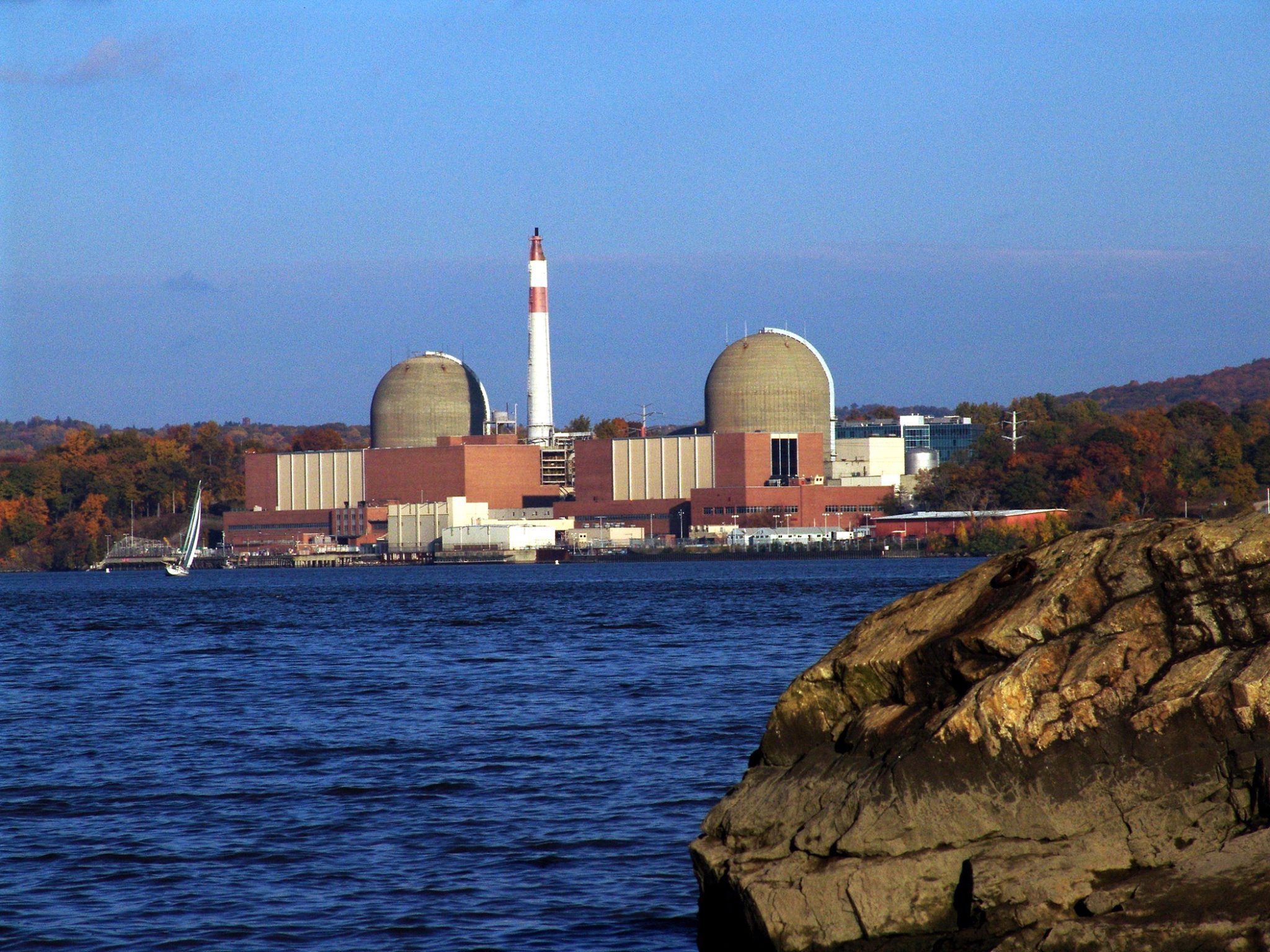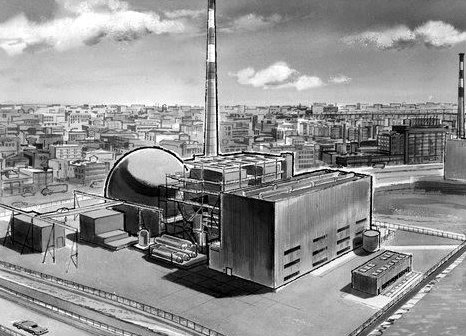
BY PAUL DERIENZO | On Mon., Dec. 14, one of two nuclear reactors at Indian Point in Buchanan, N.Y., went off-line for a second time this month. Entergy Nuclear Operations, Inc., which owns the plant, said the shutdown was caused by a “disturbance” on the non-nuclear side of the plant. According to a letter from Governor Andrew Cuomo to the New York State Public Service Commission, there was no release of radiation. Cuomo said he would send state investigators to inspect the troubled facility.
A report on the incident by Power Engineering magazine, a trade publication, said the plant’s Unit 3 “shut down as designed on Monday night after the main electrical generator sensed an electrical disturbance in the transmission lines that connect the external grid to the unit.” The reactor was returned to service on Thurs., Dec. 17. The incident followed by three days another where magnets holding control rods lost power when a circuit breaker was tripped causing a shutdown of Unit 2.
The two reactor units are among the oldest operating in the U.S. A third nuclear reactor on the site, built in the 1960s, was permanently shut down in 1974. The 40-year license of Unit 2 expired in 2013 and the Unit 3 license expired at midnight on Sun., Dec. 13. The Nuclear Regulatory Commission has said Entergy can continue to operate Indian Point while pursuing license renewal.
As the expiration of its license approached on Sat., Dec. 12, 11 activists were arrested at the power plant’s front gate. Gary Shaw, a member of the Indian Point Safe Energy Coalition, said, “We want the plant shut,” adding, “the plant never should have been opened in the first place.” According to Shaw, about 20 million people live within a 50-mile radius of Indian Point.
In May an explosion at a transformer at the nuclear plant released oil into the Hudson River and frightened local residents, who described a huge plume of black smoke rising over the plant after hearing a loud bang. According to an independent report, that accident didn’t release radiation, but did allow water to pool in a crucial electrical switch room that might have caused a catastrophic failure if it hadn’t been caught in time.
Governor Cuomo has been calling for Indian Point to be closed for years. He wrote on Tues., Dec. 15, that the latest shutdown was the sixth at Indian Point this year and the thirteenth shutdown since June 2012. Cuomo told the commission that the state has an “obligation” to properly maintain the nuclear plants and “make timely investments in critical infrastructure.”
The Atomic Safety and Licensing Board commenced hearings earlier this month to hear “evidence” about Indian Point before deciding on a 20-year license renewal. The N.R.C. recently completed an inspection of Indian Point that said, “Over all, there were no areas of concern identified.”
The commission has been quietly extending the licenses of nuclear plants throughout the U.S. However, cheap oil, natural gas and an economic downturn have made nuclear power plants less economical. Vermont Yankee, a nuclear plant also owned by Entergy, was decommissioned and is being demolished and shipped to waste dumps in the Far West. Entergy also wants to close down its nuclear plant in Oswego, N.Y., a move being opposed by Cuomo.
One of the fears motivating groups that want the Buchanan plant closed is the proximity of the planned Spectra Energy Algonquin natural gas pipeline, which was recently approved by federal regulators. The 42- inch high-pressure gas pipeline would pass 105 feet from electrical switching areas critical to the plant. The feds claim there is “no additional risk” posed to Indian Point by the pipeline.
But nuclear experts hired by local towns opposed to the Spectra plan claim that regulators have underestimated the effects of a pipeline explosion. They refer to a massive blast in San Bruno, California, in 2010 that burned for 17 hours before being extinguished. According to pipeline opponents, natural gas contains 10 times more energy than TNT. Last May a Spectra gas pipeline in Texas ruptured and released almost 4 million cubic feet of gas.
A reactor at Indian Point was first proposed in 1954. The economics of power generation at the time favored plants situated as near as possible to consumers, cutting the cost of transmitting the electricity by millions of dollars. Con Ed, the New York City region’s main utility, was planning to eventually build six nuclear plants at Indian Point, also one on an island near New Rochelle and another in Ravenswood, Queens, across the East River from E. 68th St. in Manhattan. In the end, two plants were built at Indian Point, and the New Rochelle and Ravenswood plants were never built.

The Queens reactor, which would have dominated the East River shoreline, was canceled after vigorous opposition by the local community. It was the first movement against nuclear power to be based on safety issues, and marked the beginning of local protests against nuclear power facilities across the U.S. Government scientists who examined Con Ed’s plans soon saw the location was in their words “lousy” and that leaks of radiation were inevitable. They concluded that even the smallest release would have dire consequences in an urban setting. In 1964 Con Ed withdrew its proposal.
There are three other nuclear power plants operating in New York State besides Indian Point. The Fitzpatrick plant in Oswego shares a site with the Nine Mile Point nuclear plant. Further west along Lake Ontario is the Robert Emmett Ginna nuclear plant. These are also among the oldest operating plants in America. The Fitzparick and Ginna plants have been losing money, but their continued operation is supported by Cuomo as a key to his plan to reduce carbon emissions in the state. The licenses for the two Nine Mile Point units have been extended for 20 more years until 2046.
A similar aging nuclear power station at Oyster Creek, N.J., about 100 miles south of New York City, is the oldest operating in the country and is scheduled to be decommissioned in 2019.

















